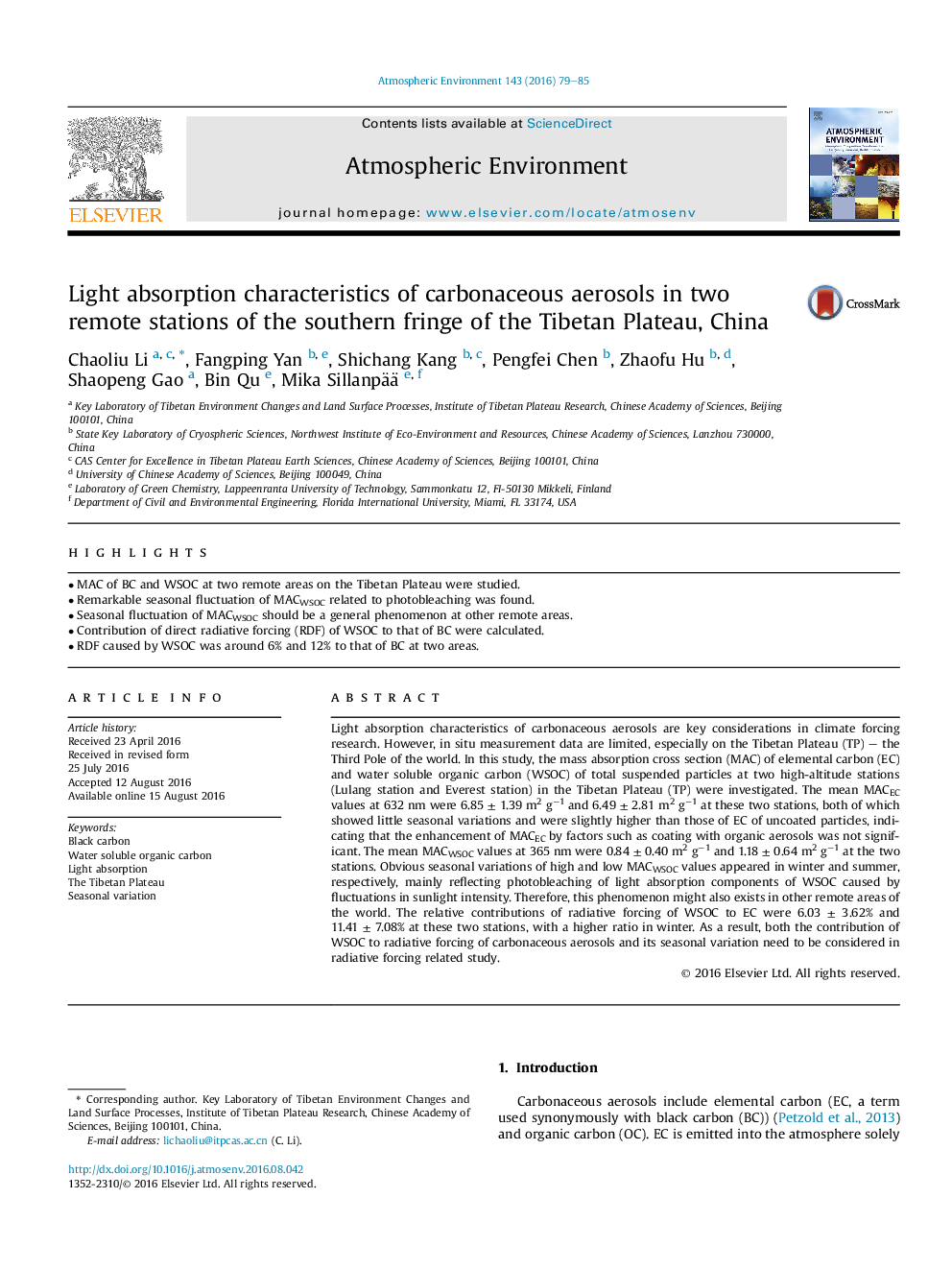| Article ID | Journal | Published Year | Pages | File Type |
|---|---|---|---|---|
| 6335906 | Atmospheric Environment | 2016 | 7 Pages |
Abstract
Light absorption characteristics of carbonaceous aerosols are key considerations in climate forcing research. However, in situ measurement data are limited, especially on the Tibetan Plateau (TP) - the Third Pole of the world. In this study, the mass absorption cross section (MAC) of elemental carbon (EC) and water soluble organic carbon (WSOC) of total suspended particles at two high-altitude stations (Lulang station and Everest station) in the Tibetan Plateau (TP) were investigated. The mean MACEC values at 632 nm were 6.85 ± 1.39 m2 gâ1 and 6.49 ± 2.81 m2 gâ1 at these two stations, both of which showed little seasonal variations and were slightly higher than those of EC of uncoated particles, indicating that the enhancement of MACEC by factors such as coating with organic aerosols was not significant. The mean MACWSOC values at 365 nm were 0.84 ± 0.40 m2 gâ1 and 1.18 ± 0.64 m2 gâ1 at the two stations. Obvious seasonal variations of high and low MACWSOC values appeared in winter and summer, respectively, mainly reflecting photobleaching of light absorption components of WSOC caused by fluctuations in sunlight intensity. Therefore, this phenomenon might also exists in other remote areas of the world. The relative contributions of radiative forcing of WSOC to EC were 6.03 ± 3.62% and 11.41 ± 7.08% at these two stations, with a higher ratio in winter. As a result, both the contribution of WSOC to radiative forcing of carbonaceous aerosols and its seasonal variation need to be considered in radiative forcing related study.
Keywords
Related Topics
Physical Sciences and Engineering
Earth and Planetary Sciences
Atmospheric Science
Authors
Chaoliu Li, Fangping Yan, Shichang Kang, Pengfei Chen, Zhaofu Hu, Shaopeng Gao, Bin Qu, Mika Sillanpää,
